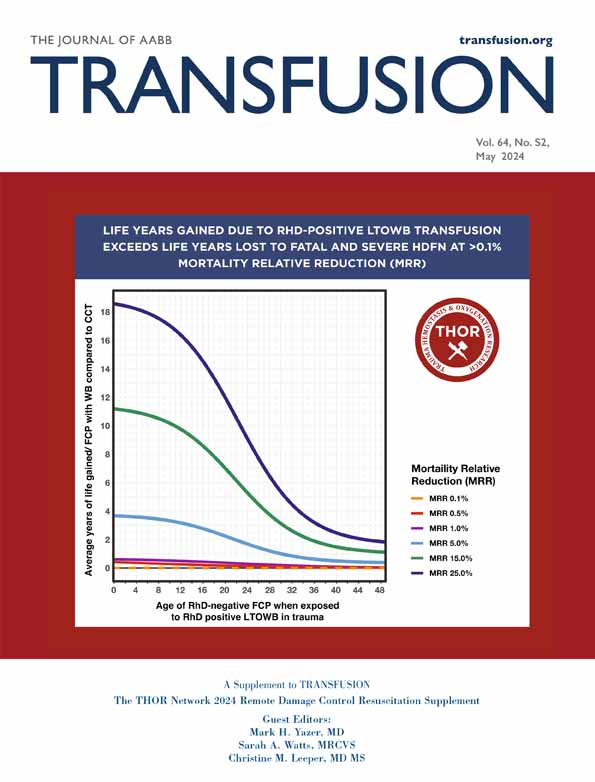Performance of far forward iceless blood storage containers in controlled cold environments
The views expressed in this manuscript are those of the authors and do not reflect the official policy of the French Military Medical Service.
Abstract
Background
The Golden Hour Box (GHB), an iceless blood container designed for transfusion closest to the point of injury, is used by military medical teams in remote damage control resuscitation. While its performance is well-established in hot environments, it remains underexplored in cold conditions, a significant consideration in emerging global conflict zones.
Study Design and Methods
Four GHBs were preconditioned at +4°C or +18°C for 8 h and subsequently exposed to controlled laboratory simulated temperatures of −5, −15, and −25°C for 100 h. The study focused on their capability to maintain an internal temperature between +2 and +6°C, the recommended range for red blood cells unit storage and transport, using calibrated sensors for precise monitoring.
Results
When exposed to negative Celsius temperatures, GHBs showed varied performance depending on preconditioning temperatures. When preconditioned at +4°C, GHBs maintained an internal temperature within the target range (+2 to +6°C) for 100 h at −5°C, 52 ± 1 h at −15°C, and 29 ± 4 h at −25°C. In contrast, the internal temperature of GHBs preconditioned at +18°C exceeded this range in less than 30 min, then dropped below 2°C more rapidly than those preconditioned at +4°C, occurring within 20 ± 2 h at −15 and 13 ± 1 h at −25°C.
Conclusion
The GHB, when properly preconditioned, effectively maintains internal temperatures suitable for blood product transport in extreme cold. Future research, including analyses of blood performances, is still needed to validate these results in more realistic operational conditions for use in cold environments.
CONFLICT OF INTEREST STATEMENT
The authors have disclosed no conflicts of interest.




